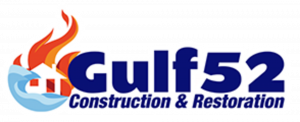Understanding Chemical Reactions Between Smoke Residues and Building Materials
When a fire burns, it produces a wide range of byproducts depending on the materials involved, the intensity of the fire, and the available oxygen. Smoke contains carbon particles, acids, chemicals, and volatile organic compounds. These microscopic particles travel throughout a structure, depositing residues on walls, ceilings, flooring, insulation, electrical systems, and HVAC components.
Earl Carr, Jr., president of Gulf 52 in Hammond, Louisiana, emphasized the complexity of smoke contamination in post-fire environments.
"Smoke damage is not limited to surface staining," said Carr. "Residues often react chemically with building materials, leading to corrosion, staining, and the breakdown of structural components over time."
Certain materials are particularly vulnerable to chemical interactions with smoke residues. Metal surfaces, including wiring, pipes, and fixtures, are prone to corrosion when exposed to the acids contained in smoke. Porous materials such as drywall, wood, insulation, and upholstery can absorb smoke residues, making complete removal difficult without professional intervention.
One of the most damaging reactions occurs when chlorides and sulfates in smoke mix with moisture in the air, forming hydrochloric and sulfuric acids. These acids aggressively attack metals, leading to pitting, rust, and failure of critical systems if not addressed quickly.
In addition, alkaline building materials, such as concrete and mortar, can suffer from chemical neutralization reactions. Smoke acids can react with the surface of concrete, weakening the material’s structure and altering its long-term durability. Over time, this can contribute to spalling, cracking, and reduced load-bearing capacity.
Electrical systems are also at high risk. Smoke residues can create conductive pathways across circuit boards and electrical panels, leading to short circuits, system malfunctions, or even electrical fires long after the original fire has been extinguished. Sensitive electronics often require specialized cleaning techniques or replacement to prevent ongoing hazards.
Plastic and synthetic materials, common in modern construction, can experience discoloration, warping, or brittleness after exposure to smoke chemicals. Even where visible damage is minimal, long-term degradation can compromise material performance and aesthetic appearance.
Carr noted that immediate and thorough assessment following a fire is critical to identify and mitigate chemical contamination.
"Hidden smoke residues can continue reacting with materials long after a fire event," Carr explained. "A comprehensive evaluation ensures proper restoration strategies are implemented before deeper damage sets in."
Standard surface cleaning methods are often insufficient to fully remove chemically bonded residues. Professional restoration may involve techniques such as soda blasting, chemical neutralization washes, dry ice blasting, and the use of specialized solvents designed to break molecular bonds between smoke residues and building surfaces.
In severe cases, complete removal and replacement of affected materials may be necessary to ensure the safety and longevity of the structure. Walls, ceilings, HVAC components, insulation, and wiring may need to be stripped and rebuilt if contamination has deeply penetrated or compromised core systems.
Addressing chemical reactions early can significantly reduce long-term restoration costs and prevent further property loss. Delayed or incomplete remediation may lead to lingering odors, persistent corrosion, material degradation, and health risks from continued exposure to toxic residues.
Insurance policies often require documentation of smoke contamination and associated damages as part of the claims process. Thorough inspections, detailed reporting, and clear photographic evidence help support appropriate settlements for full restoration efforts.
Proper ventilation, dehumidification, and environmental monitoring are important steps during the early stages of remediation. Reducing humidity levels and circulating clean air through affected spaces helps slow chemical reactions and limits the spread of corrosive agents.
Special attention must be paid to HVAC systems, which can harbor smoke residues and distribute them throughout the structure. Professional duct cleaning, filter replacement, and system decontamination are often necessary parts of the recovery process to prevent recontamination of cleaned areas.
Carr emphasized that smoke contamination requires a specialized approach distinct from traditional cleaning or cosmetic repair.
"Every material inside a building can react differently to smoke," Carr said. "Understanding the chemical interactions is key to building a safe, effective recovery plan that restores both the visible and invisible damage caused by fire events."
The long-term effects of smoke damage are not always immediately visible, making early action and informed restoration planning critical. Addressing chemical residues properly helps preserve the structural integrity, safety, and future value of affected properties.
As fire incidents remain a threat across residential, commercial, and industrial properties, awareness of the chemical dangers posed by smoke residues will continue to play a critical role in effective disaster response and building recovery strategies.
Morgan Thomas
Rhino Digital, LLC
+1 504-875-5036
email us here
Visit us on social media:
Facebook
Legal Disclaimer:
EIN Presswire provides this news content "as is" without warranty of any kind. We do not accept any responsibility or liability for the accuracy, content, images, videos, licenses, completeness, legality, or reliability of the information contained in this article. If you have any complaints or copyright issues related to this article, kindly contact the author above.
LEDFoil's in-ice LED display to bring a new era of advertising to HC Dukla Jihlava
TIGHITCO LATIN AMERICA ANNOUNCES NEW COMMERCIAL AGREEMENT WITH AIRBUS CANADA
Mindall CRM Enters the UAE Market with Advanced PropTech Tools and Developer Integrations for Real Estate Professionals
Kalendarium
Więcej ważnych informacji
 Jedynka Newserii
Jedynka Newserii

 Jedynka Newserii
Jedynka Newserii

Prawo

Trwają dyskusje nad kształtem unijnego budżetu na lata 2028–2034. Mogą być rozbieżności w kwestii Funduszu Spójności czy dopłat dla rolników
Trwają prace nad wieloletnimi unijnymi ramami finansowymi (WRF), które określą priorytety wydatków UE na lata 2028–2034. W maju Parlament Europejski przegłosował rezolucję w sprawie swojego stanowiska w tej sprawie. Postulaty europarlamentarzystów mają zostać uwzględnione we wniosku Komisji Europejskiej w sprawie WRF, który zostanie opublikowany w lipcu 2025 roku. Wciąż jednak nie ma zgody miedzy państwami członkowskimi, m.in. w zakresie Funduszu Spójności czy budżetu na rolnictwo.
Konsument
35 proc. gospodarstw domowych nie stać na zakup mieszkania nawet na kredyt. Pomóc może wsparcie budownictwa społecznego i uwolnienie gruntów pod zabudowę

W Polsce co roku oddaje się do użytku ok. 200 tys. mieszkań, co oznacza, że w ciągu dekady teoretycznie potrzeby mieszkaniowe społeczeństwa mogłyby zostać zaspokojone. Jednak większość lokali budują deweloperzy na sprzedaż, a 35 proc. gospodarstw domowych nie stać na zakup nawet za pomocą kredytu. Jednocześnie ta grupa zarabia za dużo, by korzystać z mieszkania socjalnego i komunalnego. Zdaniem prof. Bartłomieja Marony z UEK zmniejszeniu skali problemu zaradzić może wyłącznie większa skala budownictwa społecznego zamiast wspierania kolejnymi programami zaciągania kredytów.
Problemy społeczne
Hejt w sieci dotyka coraz więcej dzieci w wieku szkolnym. Rzadko mówią o tym dorosłym

Coraz większa grupa dzieci zaczyna korzystać z internetu już w wieku siedmiu–ośmiu lat – wynika z raportu NASK „Nastolatki 3.0”. Wtedy też stykają się po raz pierwszy z hejtem, którego jest coraz więcej w mediach społecznościowych. Według raportu NASK ponad 2/3 młodych internautów uważa, że mowa nienawiści jest największym problemem w sieci. Co więcej, dzieci rzadko mówią o takich incydentach dorosłym, dlatego tym istotniejsze są narzędzia technologiczne służące ochronie najmłodszych.
Partner serwisu
Szkolenia

Akademia Newserii
Akademia Newserii to projekt, w ramach którego najlepsi polscy dziennikarze biznesowi, giełdowi oraz lifestylowi, a także szkoleniowcy z wieloletnim doświadczeniem dzielą się swoją wiedzą nt. pracy z mediami.










.gif)

 |
| |
| |
|